10 Best Tripods for Real Estate Photography in 2025
It takes accuracy, stability, and the right tools to capture the charm of a home, whether it’s a cosy condo or a huge farm. A sturdy tripod is the hidden hero that makes sure shots are clear and straight. Picking the right Tripod for real estate photos can make or break your workflow, especially when you’re working with HDR bracketing, interiors with low light, or the outside of buildings. This article highlights the 10 best tripods for real estate photography, each designed to meet different shooting needs. We’ll help you find the right real estate photography tripod to improve your portfolio and impress clients.
Table of Contents
Why Tripods Are Essential for Real Estate Photography
A tripod isn’t just a piece of kit; it’s a game-changer for real estate photographers. Imagine taking pictures in a bedroom that isn’t well-lit. You need to use a slow shutter speed to catch the light from the room. Even a small amount of handshaking can ruin hours of work if you don’t have a tripod. Or, think about architectural photography, where the vertical lines should be straight to show the design of the building. When you take pictures of buildings, the Tripod keeps your camera frozen so you can focus on lighting and Composition.
When taking pictures of many properties a day, an internal photography Tripod allows you to set the same room in the same way, which saves time and assures consistency. For HDR or flambient (mix flash and ambient light), a strong real estate photography Tripod will keep your camera frozen so you can fully mix the exposure.
How to Choose the Best Tripod for Real Estate Photography
There are different types of tripods, and how you shoot the best for real estate photography, which gear you use and where you are. When choosing the best real estate photography gear, here are some things to keep in mind:
Key Features to Consider
- Height: For eye-level shots, aim for the height of 60 inches or more, and a center column that can be turned for low-angle work in small areas such as bathrooms.
- Material: Carbon fiber is strong, lighter and does not vibrate easily. Aluminum is cheaper, but it is heavy.
- Head Type: The Gear Head is best for a specific architectural configuration, while the ball head is best for quick changes.
- Portability: For multi-properties shoots, look for something that folds less than 20 inches and weighs less than 4 pounds.
- Extras: Features such as bubble levels, fast-publishing plates and a transformative monopod make it more useful in different situations.
Budget Breakdown
- Entry-Level ($50-$100): Aluminum Tripods, affordable for initial or small setups.
- Mid-Range ($100-$250): Carbon fiber or hybrid models balanced portability and strength.
- Premium ($250+): Heavy gear and the highest tripods of architectural shoots for demand.
I’m going to talk about the 10 best tripods for real estate photography now. Each one has its own strengths that make it better for different types of shots.
Top 10 Tripod for Real Estate Photography
1. Carbon Fiber Tripods
Best for Lightweight Stability in High-Volume Shoots
Professionals who want the best Tripod for real estate photography always prefer carbon fiber tripods. Because they are strong but not too heavy, they are suitable for photographers who shoot different properties every day. Carbon fiber’s ability to dampen vibrations makes HDR pictures sharp, even when there isn’t much light inside or when it’s windy outside.
Why It’s Great for Real Estate:
- Great for using a tripod for taking pictures inside with a big DSLR.
- It doesn’t shake during long exposures, which is important for methods that use fog.
- Simple to move from condos in the city to farms in the suburbs.
Top Pick: Manfrotto MT055CXPRO3
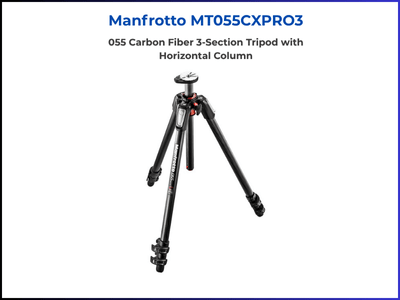
- Max Height: 66 inches
- Load Capacity: 20 pounds
- Weight: 4.2lbs
- Highlight: A 90° center pole and Quick Power Lock levers make it possible to take shots from above in the kitchen.
Pros:
- Featherlight for carrying around all day.
- Strong enough for rough outdoor architectural photos.
Cons:
- More expensive than types made of Aluminum.
2. Aluminum Tripods
Best for Budget-Conscious Photographers
Aluminum Tripods are a good choice for people who are just starting or on a tight budget because they are stable and their cost is not high. These tripods for real estate photos are a bit heavy, but when you are shooting a lot, they are strong enough to handle daily use.
Why It’s Great for Real Estate:
- A cheap addition to your kit of real estate shooting gear.
- Strong enough for normal interiors with mid-range mirrorless cameras.
- Ideal for newbies learning how to set up indoors.
Top Pick: Manfrotto MT190XPRO4
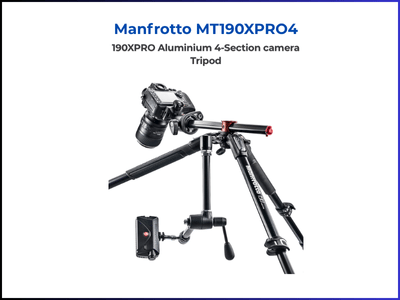
- Max Height: 63 inches
- Load Capacity: 15.4 pounds
- Weight: 4.6 lbs
- Highlight: The 90° horizontal arm is great for taking creative pictures on stairs or in hallways.
Pros:
- Affordable without losing stability at the core.
- You can connect lights or spotlights to the Easy Link port.
Cons:
- It’s heavier than carbon fiber, so it’s not as good for regular travel.
3. Travel Tripods
Best for On-the-Go Photographers
Travel tripods are small and light, and they’re made for real estate shooters who need a tripod that they can carry around in their backpack. Because the legs fold inward, they are great for urban shoots or days when you need to go to more than one location.
Why It’s Great for Real Estate:
- Very portable for homes in the city or quick shots outside.
- Even though it’s small, it keeps the Tripod stable for architectural photos.
- Great for workers who need to balance portability with speed.
Top Pick: Gitzo GT2545T Series 2 Traveler
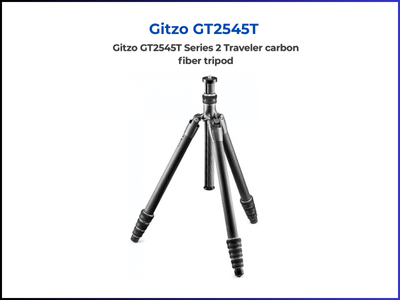
- Max Height: 60 inches
- Load Capacity: 26 pounds
- Weight: 2.3 lbs
- Highlight: The reverse-folding legs make it possible to fold the length down to just 16.7 inches.
Pros:
- It’s easy to carry because it fits in small camera bags.
- The carbon fiber construction keeps the shots from shaking.
Cons:
- Taller people may have to bend over to use something shorter.
4. Flexible Tripods
Best for Creative Angles in Tight Spaces
Flexible tripods, such as the famous Joby GorillaPods, can bend and wrap around things, making them the best choice for taking pictures inside. They are great for tight places where regular tripods will not work, such as perching on a counter or wrapping around the railing for a shot of stairs.
Why It’s Great for Real Estate:
- It can be used in small houses or old homes with odd layouts.
- It’s light, so it can be set up quickly when time is limited.
- Gives ordinary real estate photos an artistic edge.
Top Pick: Joby Gorillapod 5K
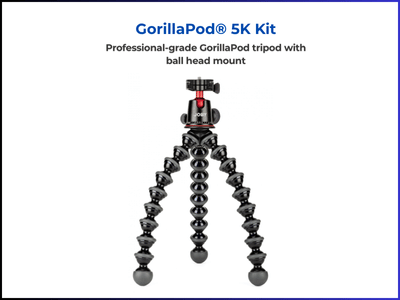
- Max Height: 16.5 inches (can be stretched)
- Load Capacity: 11 pounds
- Weight: 0.9 lbs
- Highlight: The legs are bendable so that they can be wrapped around things.
Pros:
- Ultra-compact for carrying in a bag.
- For unusual situations, it’s very useful.
Cons:
- There isn’t enough height for full-room arrangements.
5. Geared Head Tripods
Best for Precision in Architectural Photography
Geared head tripods are the best for architectural photography because they let you make small changes to get the horizons and verticals exactly where you want them. When shooting modern homes or business properties where accuracy is key, these tripods really shine.
Why It’s Great for Real Estate:
- Make sure that high-end ads have lines that aren’t distorted.
- Great for HDR bracketing when you have a lot of gear.
- Makes complicated arrangements easier to see in big areas.
Top Pick: Manfrotto 405 Geared Head Tripod
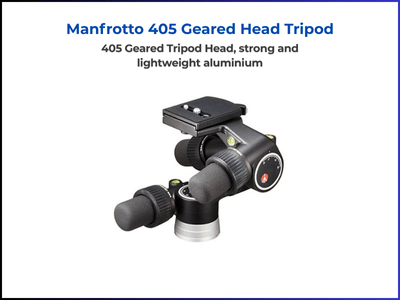
- Max Height: 62 inches
- Load Capacity: 16.5 pounds
- Weight: 5.3lbs
- Highlight: Micrometric knobs allow for accurate adjustments.
Pros:
- Control over building alignments that can’t be beat.
- Strong enough to hold heavy lenses like a 14mm wide-angle.
Cons:
- It takes longer to fix than ball heads.
6. Ball Head Tripods
Best for Quick Adjustments in Fast-Paced Shoots
Because they can pan and tilt smoothly and quickly, ball head tripods are a must-have for real estate photography shoots that need to be flexible. They’re great for shooters who need to promptly change angles when moving from one room to another or when shooting outside at dusk.
Why It’s Great for Real Estate:
- Makes work go faster on shoots with a lot of people.
- It can be used as a tripod for both indoor and outdoor photos.
- Lightweight heads make the Tripod lighter overall.
Top Pick: Vanguard Alta Pro 2+ 263AB100
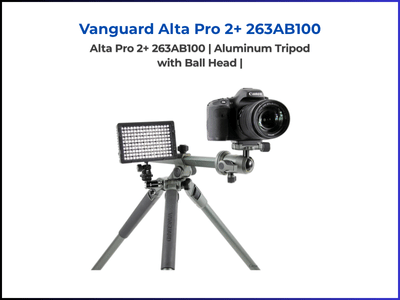
- Max Height: 68 inches
- Load Capacity: 15.4 pounds
- Weight: 5.3 lbs
- Highlight: The center column can be set at any angle, up to 180°.
Pros:
- Plates with quick-release clips for quick camera swaps.
- Smooth moving is possible with fluid movement.
Cons:
- Not as accurate as geared heads for building work.
7. Monopod-Convertible Tripods
Best for Hybrid Photo and Video Work
Some tripods can also be used as monopods, which gives shooters more options for video walkthroughs or when they need something lighter for quick shots outside. These are great adds to your real estate photography gear if you want to shoot in more than one format.
Why It’s Great for Real Estate:
- It can be changed into a monopod for moving property walks.
- One tool that does two things saves room.
- Stable enough for internal shots that don’t move.
Top Pick: MeFOTO RoadTrip Classic
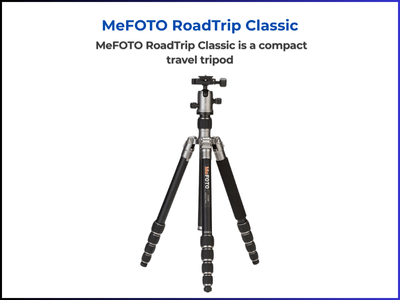
- Max Height: 62 inches for tripods and 61.4 inches for monopods
- Load Capacity: 17.6 pounds
- Weight: 3.7lbs
- Highlight: The leg can be taken off to turn it into a monopod.
Pros:
- Photos and videos can be used in two ways.
- Stylish style with many colours.
Cons:
- It can take longer to use twist locks.
8. Heavy-Duty Tripods
Best for Large Gear and Outdoor Shoots
Heavy-duty tripods are made to hold professional setups, which makes them the best choice for real estate photography with full-frame cameras and big lenses. They’re great for building shots outside where extra stability is needed because of wind or rough ground.
Why It’s Great for Real Estate:
- Takes care of heavy tripod gear for architectural photos.
- Feet with spikes can grip dirt or grass outside.
- Perfect for long exposures outside at dusk.
Top Pick: Benro Mach3 TMA38CL
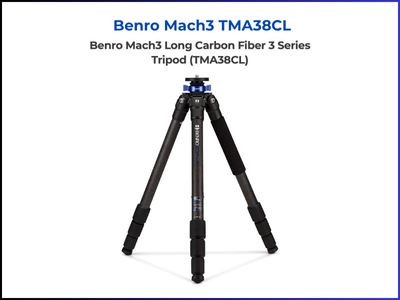
- Max Height: 69.7 inches
- Load Capacity: 35.3 pounds
- Weight: 3.7 lbs
- Highlight: Seals that don’t let dust in for long-lasting use outside.
Pros:
- It can hold big tilt-shift lenses to fix distortion.
- Carbon fiber makes the weight easy to handle.
Cons:
- A different head is sold for an extra cost.
9. Compact Aluminum Tripods
Best for Beginners with Limited Budgets
Compact Aluminum tripods are a good choice for new shooters who want to take pictures inside because they are affordable and easy to carry. They’re not too heavy for small flats but strong enough for basic setups.
Why It’s Great for Real Estate:
- Affordable enough to get you started with real estate photography gear.
- Small enough to fit in bathrooms or closets.
- Reliable for mobile cameras that are just beginning.
Top Pick: GEEKOTO 75-Inch Aluminum Tripod
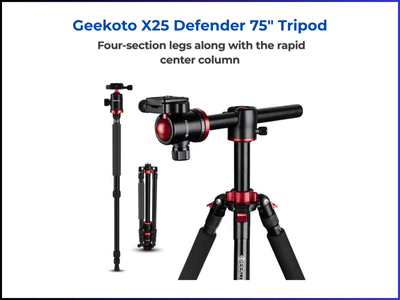
- Max Height: 75 inches
- Load Capacity: 22 pounds
- Weight: 4.4 lbs
- Highlight: The built-in monopod makes it very flexible.
Pros:
- Tall reach for outside or high ceilings.
- Cheap enough for new workers.
Cons:
- Made of Aluminum, it adds a little weight.
10. Premium Designer Tripods
Best for High-End Aesthetic and Durability
High-end designer tripods are both useful and stylish, and they are made from eco-friendly materials and come with lifetime guarantees. These tripods for real estate photography are great for shooters who want to make their gear look professional.
Why It’s Great for Real Estate:
- Clients at high-end shoots like sleek designs.
- Made to last through years of heavy use.
- Features that can be changed to make settings unique.
Top Pick: 3 Legged Thing Legends Jay
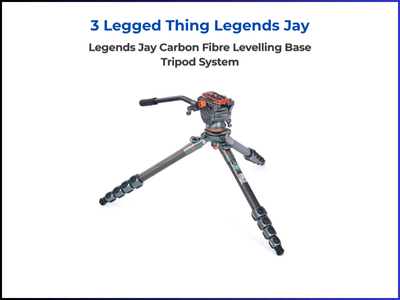
- Max Height: 56.7 inches
- Load Capacity: 30 pounds
- Weight: 3lbs
- Highlight: The head is compatible with Arca-Swiss, and the feet can be switched out.
Pros:
- Eco-friendly materials and help for life.
- Lightweight for travelling a lot.
Cons:
- Less height for shooters who are taller.
Pro Tips for Using Your Real Estate Photography Tripod
Follow these tips from professionals to get the most out of your Tripod when taking pictures of real estate:
- Use the Bubble Level: Don’t tilt the walls in your pictures; use the bubble level to make sure the distances are straight in every shot.
- Adjust Leg Angles: Set the legs at 25° to 80° for floors that aren’t level—flexible tripods like the Joby work best for this.
- Master Flambient: Lock your Tripod and take three to five bracketed shots to get the right mix of flash and ambient exposures.
- Quick-Release Plates: Quickly switch cameras from one room to another to keep the shoot on schedule.
- Clean Your Gear: To keep heavy-duty models working well, wipe down the legs of your gear after shooting outside.
These tips will help you get steady, professional results from your Tripod, whether you’re taking pictures inside or outside.
Wrapping Up: Find Your Perfect Real Estate Photography Tripod
It’s not enough to have a stable tripod for real estate photography. You also need to make sure that it fits with your process, gear, and artistic vision. You can use a Joby Gorillapod to get a unique angle or a Manfrotto geared head to level it for precise building work.
These 10 types of tripods have something for everyone. There is a real estate photography tripod for every price, from cheap Aluminum to high-end carbon fiber. These tripods will help you get better pictures and sell homes faster. Which type is right for you? Choose one, set it up, and start taking pictures of homes that stand out. Have fun shooting!
Read more Blogs
12 Best Lenses for Real Estate Photography in 2025
Best Lights for Real Estate Photography in 2025
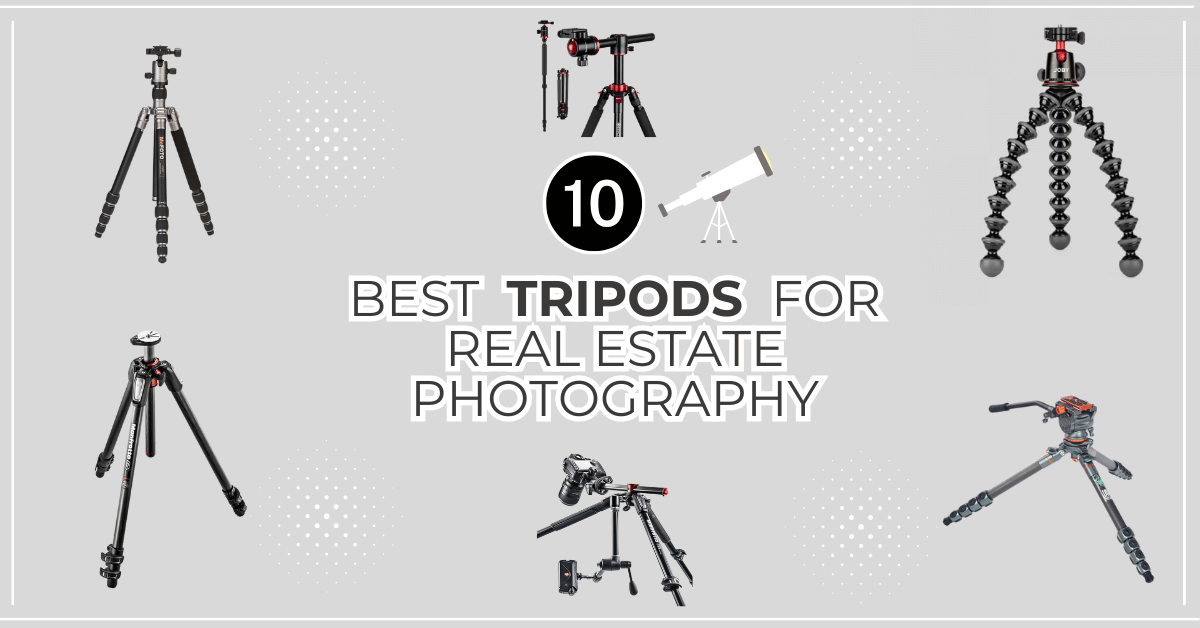
Rainx Drive is the Best Cloud Storage Platform